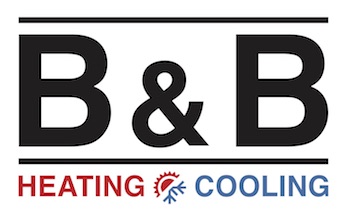
You might not think much about how your air conditioner works, but it depends on refrigerant to keep your house cold. This refrigerant is controlled by environmental regulation, as it contains chemicals.
Subject to when your air conditioner was put in, it may use R-22, R-410A or R-32 refrigerant. We’ll discuss the differences and which air conditioner refrigerants are being phased out in Florissant and St. Charles, plus how these phaseouts have on influence on you.
What’s R-22 and Why Is It No Longer Being Made?
If your air conditioner was put in before 2010, it likely uses Freon®. You can discover if your air conditioner contains it by calling us at 314-668-8530. You can also look at the name plate on your air conditioner condenser, which is situated outside your house. This sticker will contain info on what type of refrigerant your AC has.
Freon, which is also referred to as R-22, has chlorine. Scientists consider Freon to be damaging to the earth’s ozone layer and one that prompts global warming. The Environmental Protection Agency, which manages refrigerants in the United States, banned its production and import in January 2020.
I Have a R-22 Air Conditioner. Should I Replace It?
It depends. If your air conditioning is running as designed, you can continue to keep it. With regular air conditioner maintenance, you can expect your system to operate around 15–20 years. However, the Department of Energy reports that replacing a 10-year-old air conditioner could save you 20–40% on annual cooling costs!
If you don’t install a new air conditioner, it may cause difficulties if you require air conditioning repair down the road, specifically for refrigerant. Repairs can be more expensive, because only limited amounts of recycled and reclaimed R-22 is accessible.
With the discontinuation of R-22, most new air conditioners now have Puron®. Also known as R-410A, this refrigerant was created to keep the ozone layer in good shape. As it requires an incompatible pressure level, it isn’t compatible with air conditioners that need R-22 for cooling.
However, Puron still has the likelihood to create global warming. As a consequence, it may also ultimately be ended. Although it hasn’t been disclosed yet for residential air conditioners, it’s likely sometime this decade.
What Refrigerant Will Take Over R-410A?
In preparation of the discontinuation, some brands have initiated using R-32 in new air conditioners. This refrigerant rates low for global warming potential—approximately one-third less than R-410A. And it also reduces energy use by around 10%, according to the Intergovernmental Panel on Climate Change’s Fourth Assessment Report. That’s savings that could be forwarded on to you through your utility costs.
B & B Heating & Cooling Can Help with All Your Air Conditioning Needs
In brief, the alterations to air conditioner refrigerant probably won’t concern you greatly until you require repairs. But as we went over previously, refrigerant repairs might be more costly due to the restricted amounts on hand.
Not to mention, your air conditioner often breaks down at the worst time, frequently on the hottest day when we’re experiencing many other calls for AC repair.
If your air conditioner relies on a phased out refrigerant or is aging, we recommend installing a modern, energy-efficient air conditioner. This ensures a stress-free summer and may even reduce your utility expenses, especially if you choose an ENERGY STAR®-rated system. Plus, B & B Heating & Cooling provides many financing programs to make your new air conditioner even more affordable. Contact us at 314-668-8530 to begin today with a free estimate.
